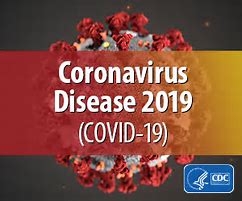Atlanta, GA…Local public health authorities determine and establish the quarantine options for their jurisdictions. CDC currently recommends a quarantine period of 14 days. However, based on local circumstances and resources, the following options to shorten quarantine are acceptable alternatives. Quarantine can end after Day 10 without testing and if no symptoms have been reported during daily monitoring. With this strategy, residual post-quarantine transmission risk is estimated to be about 1% with an upper limit of about 10%.
When diagnostic testing resources are sufficient and available (see bullet 3, below), then quarantine can end after Day 7 if a diagnostic specimen tests negative and if no symptoms were reported during daily monitoring. The specimen may be collected and tested within 48 hours before the time of planned quarantine discontinuation (e.g., in anticipation of testing delays), but quarantine cannot be discontinued earlier than after Day 7.
With this strategy, the residual post-quarantine transmission risk is estimated to be about 5% with an upper limit of about 12%.
In both cases, additional criteria (e.g., continued symptom monitoring and masking through Day 14) must be met and are outlined in the full text.
Background
Quarantine is used to separate someone who might have been exposed to COVID-19 and may develop illness away from other people. Quarantine helps prevent spread of disease that can occur before a person knows they have the virus. CDC recognizes that any quarantine shorter than 14 days balances reduced burden against a small possibility of increasing the spread of the virus.
The recommendation for a 14-day quarantine was based on estimates of the upper bounds of the COVID-19 incubation period. Quarantine’s importance grew after it was evident that persons are able to transmit SARS-CoV-2 before symptoms develop, and that a substantial portion of infected persons (likely somewhere between 20% to 40%1) never develop symptomatic illness but can still transmit the virus. In this context, quarantine is a critical measure to control transmission.
Quarantine is intended to reduce the risk that infected persons might unknowingly transmit infection to others. It also ensures that persons who become symptomatic or are otherwise diagnosed during quarantine can be rapidly brought to care and evaluated. However, a 14-day quarantine can impose personal burdens that may affect physical and mental health as well as cause economic hardship that may reduce compliance. Implementing quarantines can also pose additional burdens on public health systems and communities, especially during periods when new infections, and consequently the number of contacts needing to quarantine, are rapidly rising. Lastly, the prospect of quarantine may dissuade recently diagnosed persons from naming contacts and may dissuade contacts from responding to contact tracer outreach if they perceive the length of quarantine as onerous.
Reducing the length of quarantine will reduce the burden and may increase community compliance. This document lays out evidence to support two options to shorten the quarantine period. Shortening quarantine may increase willingness to adhere to public health recommendations but will require evaluation; not only in terms of compliance with quarantine and contact tracing activities, but also for any potential negative impacts such as post-quarantine transmission. Any option to shorten quarantine risks being less effective than the currently recommended 14-day quarantine. The variability of SARS-CoV-2 transmission observed to-date indicates that while a shorter quarantine substantially reduces secondary transmission risk, there may be settings (e.g., with high contact rates) where even a small risk of post-quarantine transmission could still result in substantial secondary clusters.



